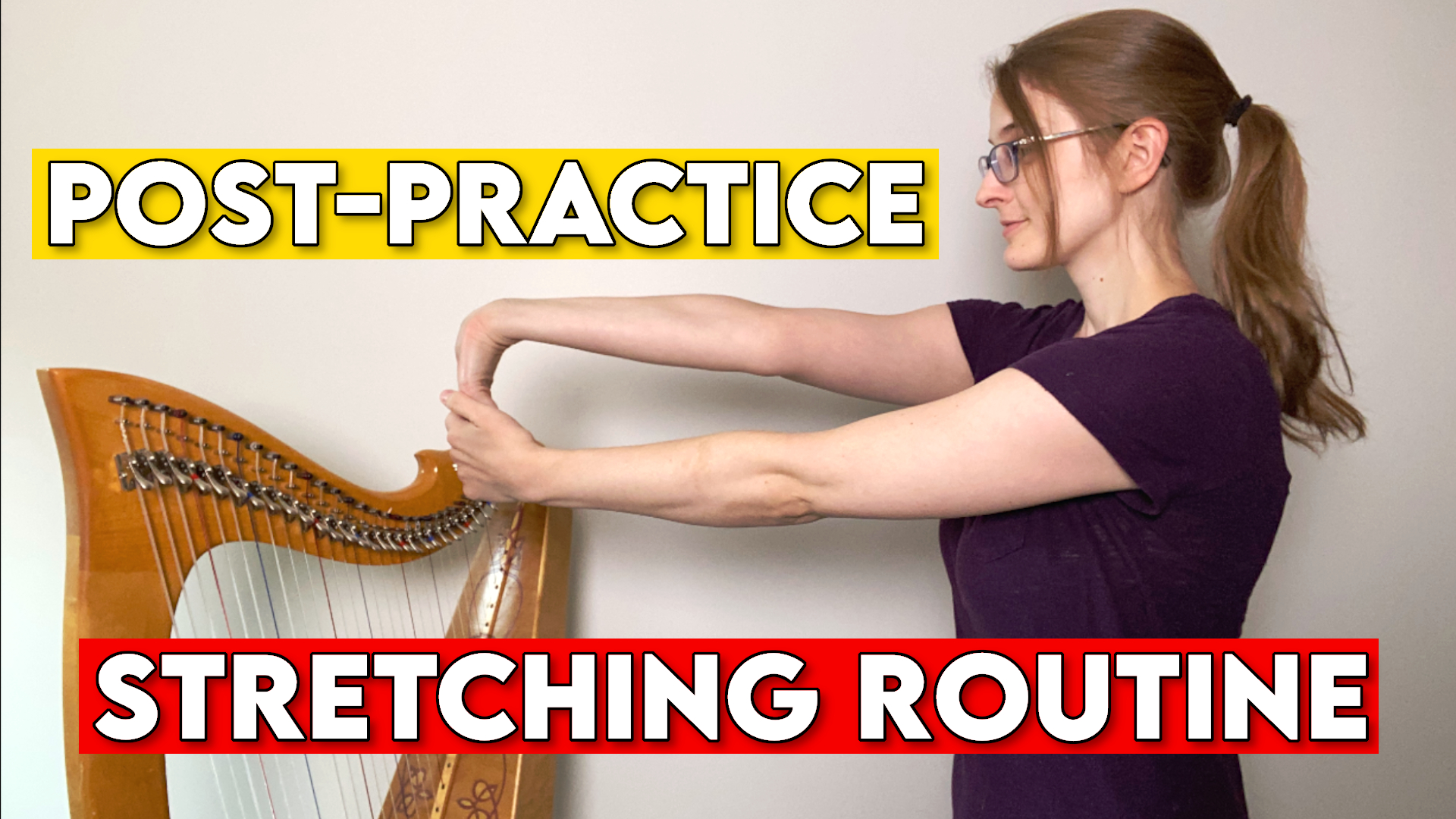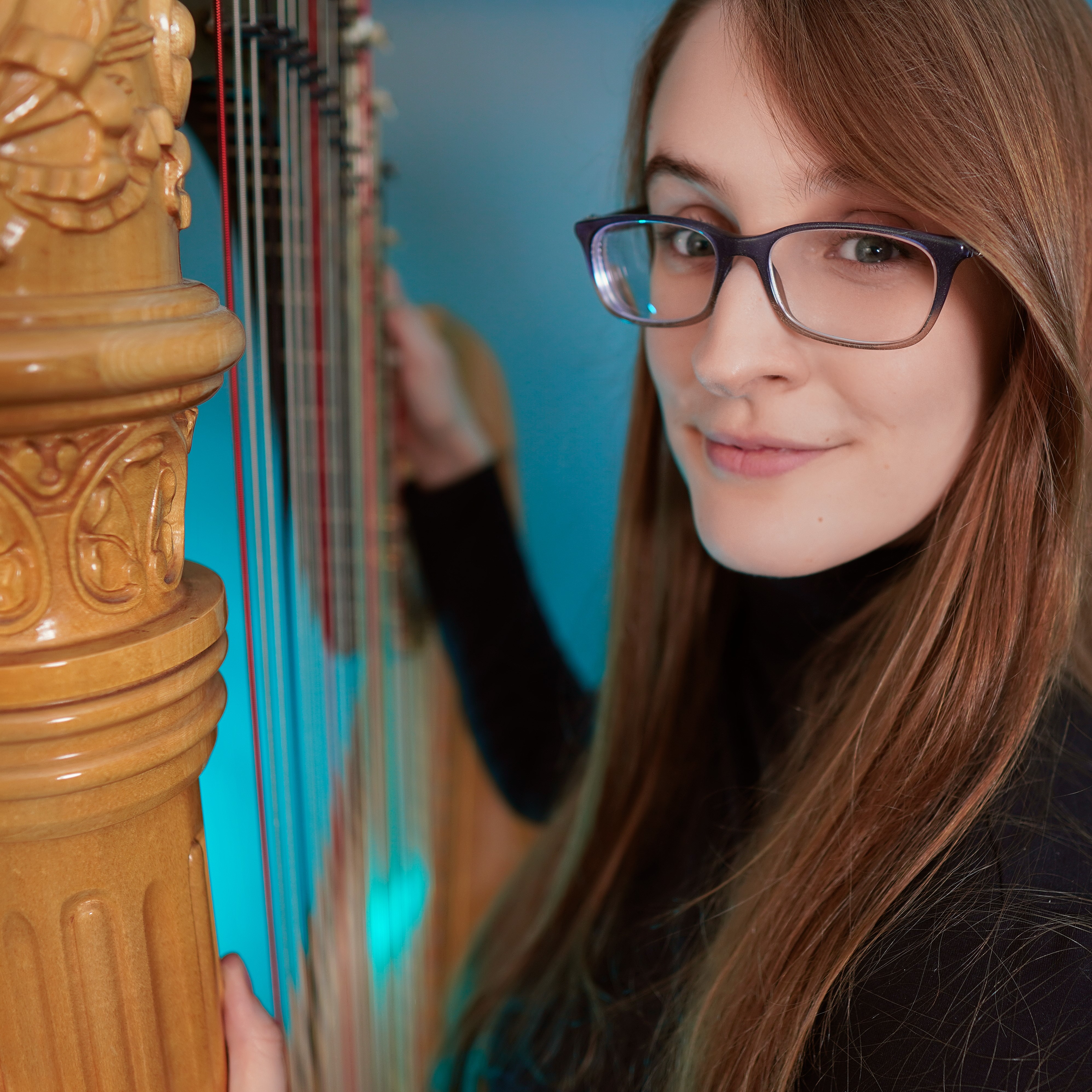
10 Injury Preventing Stretches for Harpists
Injury prevention is a major concern when learning an instrument, especially for adults and those of us experiencing chronic pain conditions.
Stretching is an incredibly important tool to keep your body healthy and pain free; but it is possible to do it wrong so in this post I’m going to explain what stretching actually does, common pitfalls to avoid, and share my post practice stretching routine to keep my muscles limber and playing their best.
Hey, I’m Samantha, and this is an important topic to me because I do have chronic pain and have for more than ten years and stretching has been really important in my pain management.
First thing I want to talk about is what is the purpose of stretching? Why do we need to do it at all?
Well, put simply, when you play the harp your muscles contract and get shorter. This is why your muscles might feel sore and painful after practice .
After you finish practicing, static stretching where you stretch and hold a position helps elongate them again to balance out all that shortening that happened while you were playing.
It also increases blood flow to the area to help your muscles recover.
Now, before we get to the actual stretches, there are actually ways you can do this wrong that may actually hurt you more than it helps you.
So here are some disclaimers to follow to make sure you’re stretching the right way:
STRETCH AFTER YOU PRACTICE, not before
I know you want to! You might think it's good for you, but don’t do it!
Static stretching pulls on your muscles, so they need to be warm and flexible in order to stretch safely. Before you warm up and practice, your muscles may be cold and static stretching risks hurting your muscles, not helping them.
If you want to know what kinds of movements you SHOULD do before practice , check out this video I made all about that subject.
DO NOT STRETCH TO THE POINT OF PAIN
You should only move to the point of a gentle pull on your muscles, and not further. Definitely not to where it hurts. Stretching farther than your body allows puts extra strain on your joints and that is not the goal here.
DONT STRETCH TOO OFTEN
Yes, there’s too much of a good thing. Similar to the last point, stretching does put pull on your muscles, tendons, and ligaments in your joints and stretching too often can create unnecessary strain. I would recommend not stretching more than three times a day spread out throughout the day.
DON'T BOUNCE
Hold your position steady for about 30 seconds without bouncing.
Okay we are now ready for the actual stretches you should do after you practice the harp!
This is a list of my usual post-practice stretching routine:
Shoulders: cross one arm over your chest and hold it in place with the other arm
Sides: Raise your arms overhead and lean over to each side, bending at the waist, OR put your hands against a wall and bow forward til your head is between your arms
Chest: Place your hand and forearm against a wall and turn away
Chest and arms: Clasp your hands behind your back and push out your chest
Hips: Spread your feet and bend at your hips to each side, reaching your arm overhead
Arm/tricep: point your elbow to the sky and use your other hand to push it gently behind your head
Neck: hold your head to side or hold the edge of a seat and look away
Hands: bend at the wrist and use the opposite hand to push further into the stretch; do this with both the palm facing up and palm facing down
Hands and chest: T pose: Hold your arms out straight to each side
Lie on floor: the best way for your body to heal itself is simply to rest. If you have some time, lie on the floor with your knees bent or propped up on a chair, with a thin towel under your head to keep your head in line with your spine. Do this after all your stretching because this will cool your muscles down.
Check out this video for examples of all of these stretches:
And for more free harp tips like this one, sign up for my email newsletter here!

